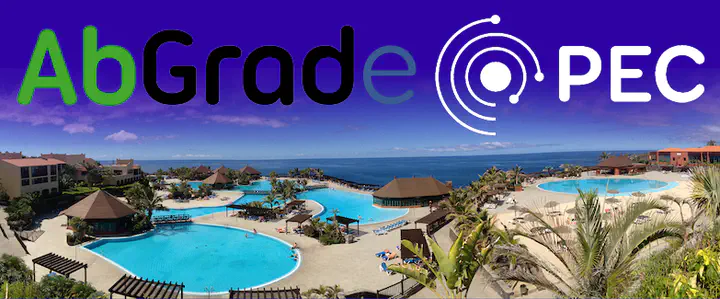Contributed talk at AbGradEPEC 2023
Tidal Accelerations, (Cryo-)Volcanism, and Habitability in the Solar System and Extrasolar Planetary Systems
 Image credit: AbgradE
Image credit: AbgradEAbstract
Volcanism powered by tidal forces inside celestial bodies can provide enough energy to keep important solvents for living systems in the liquid phase. Unfortunately, from measurements in many extrasolar planetary systems, only a few physical and orbital parameters are known well enough to evaluate the tidally driven potential for volcanism and liquid solvents on these exoplanets. By calculating tidal acceleration vectors, we developed a simulation method (Paschek et al. 2021) that is based on only a few basic parameters, easily measurable even in extrasolar planetary systems. I will present how this allowed us to find a relation between the tidal acceleration vectors and potential heating inside celestial objects. Applying the model to our solar system and using the knowledge about different forms of volcanism prevailing in our “home system” allowed us to classify this heating as a “gold standard”. Many extrasolar planetary systems hosted by a dwarf star, e.g. TRAPPIST-1, have a similar orbital extension and structure to the satellite systems around the gas giants in our solar system, e.g. the Galilean moons. By exploiting this similarity, our “gold standard” approach gave us a classification measure for the relevance of tidal heating in other extrasolar systems with reduced availability of exact physical parameters. This allows us to identify potential candidates for further follow-up investigations by more detailed established methods such as viscoelastic multi-body theories or future exoplanet observation programs. Volcanism powered by stored accretion energy and the decay of radioactive isotopes seems to be dominant mainly inside larger bodies, which have enough volume to accumulate and retain this energy in significant amounts over long time periods. On the other hand, the impact of tidal forces allows even tiny bodies to melt up and pass into the stage of cryovolcanism (or even silicate volcanism in the case of Jupiter’s moon Io). (Hildenbrand et al. 2022) As our model (Paschek et al. 2021) gives insights into where cryovolcanism might be expected, I will explore some arguments for how this might extend the pool of potentially habitable words.
E-38740 Fuencaliente de la Palma
La Palma, Spain